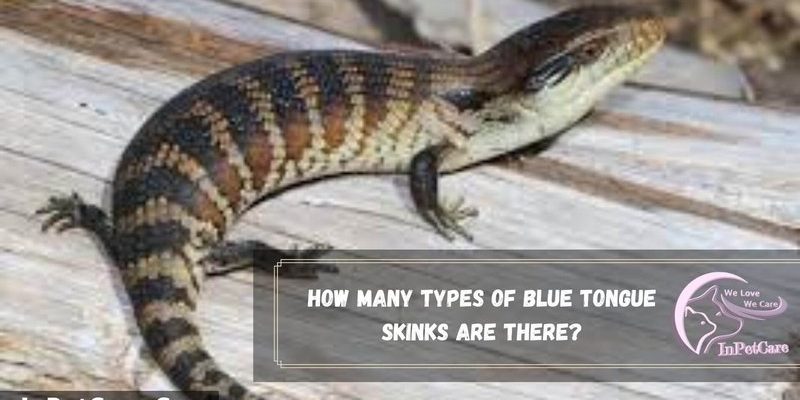
In this guide, we’ll explore what makes blue-tongue skinks stand out and how to identify them in their natural habitat. From their striking features to their behaviors, understanding these creatures can enhance your outdoor adventures. You might be wondering what to look for, or how to spot them in the wild without disturbing their environment. Let’s dive in!
What Are Blue-Tongue Skinks?
Blue-tongue skinks are a type of lizard belonging to the family Scincidae. They are primarily found in Australia and New Guinea, although a few species can also be seen in Indonesia. These skinks are known for their distinctive bright blue tongues, which they display when threatened. It’s their way of saying, “Hey, I’m not interested in a fight!” This vibrant tongue is not just for show; it can deter potential predators by startling them.
These lizards can grow up to 24 inches long, depending on the species. Their bodies are elongated and stout, with short legs and a small head. When you see a blue-tongue skink, you’ll notice its smooth, shiny scales, worn on its body like a suit of armor. Their coloration varies, ranging from brown and tan to orange and gray, often with patterns that help them blend into the forest floor or among rocks.
Key Characteristics to Look For
If you’re trying to spot a blue-tongue skink, there are several *key characteristics* that make identification easier. First, pay attention to their size and shape. Blue-tongues are relatively large for lizards, with a thick body and short, sturdy legs. This is quite different from the slender, more agile lizards you might find scurrying around.
Next up, the color of their skin! Most blue-tongue skinks have a base color of brown, sandy, or gray, with darker stripes or patterns. But the real showstopper is their tongue. When threatened, a skink will open its mouth wide, flashing a bright blue tongue that can be a shocking sight in the wild. This is a great way to identify them from a distance if they are startled.
Lastly, notice their behavior. Blue-tongue skinks are generally *docile* and not quick to run away. They often bask in the sun, soaking in warmth, or hide under rocks or logs. If you observe a lizard hanging out in a sunny spot, take a closer look—it might just be a blue-tongue skink!
Where to Find Blue-Tongue Skinks
Blue-tongue skinks are quite adaptable and can thrive in a variety of environments. You’ll commonly find them in *woodlands*, *grasslands*, and even suburban areas where there’s plenty of cover and food. They enjoy living in places with lots of hiding spots—think rocks, fallen trees, or dense brush.
If you’re out hiking, look around for areas with low vegetation and plenty of ground cover. These skinks are often seen sunbathing on warm rocks or paths. They are diurnal, meaning they are most active during the day. So, plan your search for mornings or afternoons when they’re out and about.
Keep in mind, though, that blue-tongue skinks can be shy, so being quiet and patient is key. You might even spot them on their way to forage for food, which includes insects, fruits, and vegetables. If you’re lucky, you may even catch a glimpse of one basking in the sun, showing off that infamous blue tongue!
How to Safely Observe Blue-Tongue Skinks
When you’re out looking for blue-tongue skinks, it’s important to observe them without causing distress. Here are some tips for safe observation:
- Keep your distance: Use binoculars or a camera with a zoom lens to get a closer look without approaching too closely.
- Stay quiet: Sudden movements and loud noises can scare them away. Move slowly and calmly while you’re observing.
- Avoid handling: While blue-tongue skinks are typically friendly, they’re still wild animals. It’s best to let them be unless you’re experienced and know how to safely catch and handle reptiles.
Taking a moment to appreciate these lizards without intruding on their space not only benefits the skink but also enhances your connection to nature. Plus, it’s a bonus if you get to capture stunning photos to show your friends later!
Common Myths About Blue-Tongue Skinks
When it comes to blue-tongue skinks, there are a few myths that just won’t go away. One of the most common is that they are venomous. Here’s the thing—blue-tongue skinks are harmless to humans. They rely on their defensive display (that flashy blue tongue) rather than venom to ward off predators.
Another myth people often believe is that they can change color, like some chameleons. While these lizards can display different shades depending on their environment and mood, they don’t actually change colors in the way chameleons do. Their color is pretty much set—what you see is what you get!
Understanding these myths can help you appreciate blue-tongue skinks even more. They’re unique creatures that play a special role in our ecosystem, so let’s celebrate them rather than fear them!
Why Learning About Blue-Tongue Skinks Matters
Learning how to identify blue-tongue skinks isn’t just for fun; it plays a crucial role in conservation. By knowing what these lizards look like and where they live, you can help protect their habitats. Many wildlife species face threats from habitat loss, pollution, and climate change.
By being informed and sharing your knowledge with others, you contribute to a greater understanding of these reptiles and the ecosystems they inhabit. If you ever see someone mishandling a skink or disturbing its habitat, you can step in and educate them.
Moreover, appreciating wildlife can foster a deeper connection with nature. Whether you’re hiking, camping, or just enjoying a day outdoors, every encounter with wildlife can remind us of the beauty and diversity of our planet. So take the time to learn about blue-tongue skinks and encourage others to do the same!
Spotting a blue-tongue skink in the wild can be an exciting and educational experience. By knowing what to look for—such as their unique characteristics, preferred habitats, and safe observation practices—you can find joy in these charming reptiles. Remember, these lizards are more than just creatures with cool colors; they are integral parts of our ecosystems.
Next time you head outdoors, keep your eyes peeled for a flash of blue! Embrace the adventure, and who knows? You might just find yourself sharing a memorable moment with nature that you’ll cherish for years to come. Happy skink spotting!

